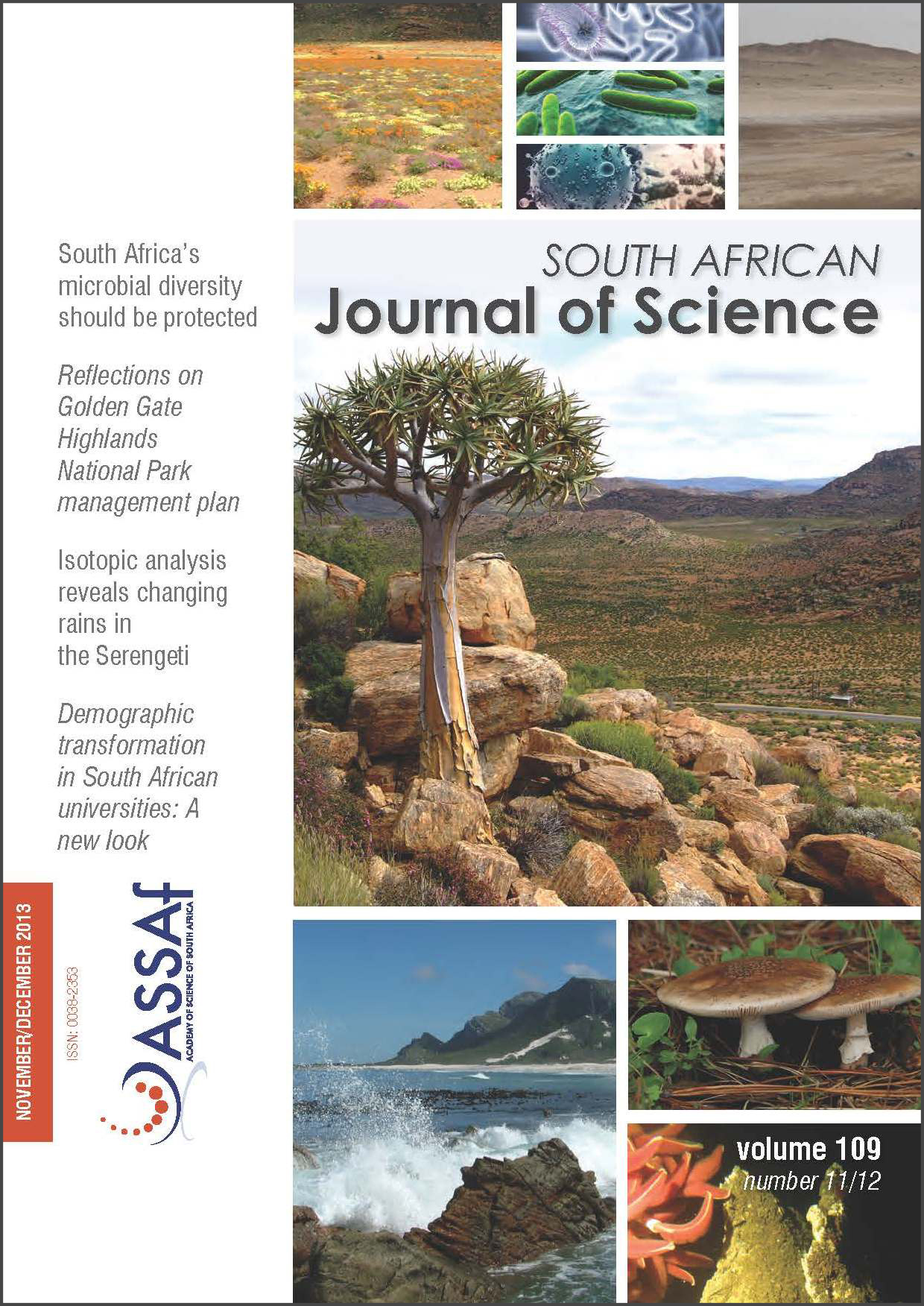Isotopic ecology of fossil fauna from Olduvai Gorge at ca 1.8 Ma, compared with modern fauna
DOI:
https://doi.org/10.1590/sajs.2013/20130105Keywords:
carbon isotopes, oxygen isotopes, Olduvai fossils, moisture sources, vertebrate ecologyAbstract
Light stable isotope ratios (δ13C and δ18O) of tooth enamel have been widely used to determine the diets and water sources of fossil fauna. The carbon isotope ratios indicate whether the plants at the base of the food web used C3 or C4 photosynthetic pathways, while the oxygen isotope ratios indicate the composition of the local rainfall and whether the animals drank water or obtained it from plants. The contrasting diets of two early hominin species – Homo habilis and Paranthropus boisei – of ca 1.8 Ma (million years ago) in Tanzania were determined by means of stable carbon isotope analysis of their tooth enamel in a previous study. The diets of two specimens of P. boisei, from Olduvai and Peninj, proved to be particularly unusual, because 80% of their carbon was derived from C4 plants. It was suggested that their diet consisted primarily of plants, with particular emphasis on papyrus, a C4sedge. The dominance of C4 plants in the diet of P. boisei is a finding supported in another study of 22 specimens from Kenya. The isotopic ecology and diets of fossil fauna that were present at the same time as the two fossil hominin species are described here, in order to provide a fuller understanding of their contrasting diets and of the moisture sources of their water intake. This information was then compared with the isotopic composition of modern fauna from the same region of Tanzania. The carbon isotope ratios for both fossil and modern specimens show that the habitats in which these faunal populations lived were quite similar – grassland or wooded grassland. They had enough bushes and trees to support a few species of browsers, but most of the animals were grazers or mixed feeders. The oxygen isotope ratios of the fossil and modern fauna were, however, very different, suggesting strongly that the source of moisture for the rain in the Olduvai region has changed during the past 1.8 million years.
Published
Issue
Section
License
Copyright (c) 2018 Nikolaas J. van der Merwe

This work is licensed under a Creative Commons Attribution 4.0 International License.

All articles are published under a Creative Commons Attribution 4.0 International Licence
Copyright is retained by the authors. Readers are welcome to reproduce, share and adapt the content without permission provided the source is attributed.
Disclaimer: The publisher and editors accept no responsibility for statements made by the authors
How to Cite
- Abstract 408
- PDF 409
- EPUB 172
- XML 190













.png)